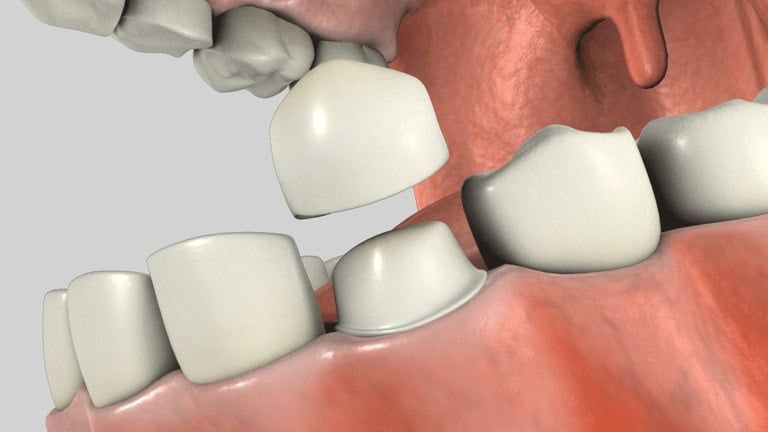Zirconia Crowns (Caps) in Vancouver
Restore Strength, Function, and Beauty to Your Smile
At Cambie Marine Gateway Dental, we offer high-quality Zirconia crowns to restore and protect damaged teeth while maintaining a natural appearance. Whether you have experienced tooth decay, a fracture, or recently completed a root canal, Zirconia crowns provide a reliable, long-lasting solution that strengthens and enhances your smile.

What is a Dental Crown?
A dental crown, also known as a cap, is a custom-made hollow structure that covers a damaged, decayed, or weakened tooth. Crowns restore the tooth’s shape, size, strength, and function while improving its appearance.
You may need a crown if you have:
- A large filling that weakens the tooth
- A tooth that has undergone a root canal
- A cracked, broken, or worn-down tooth
- A severely discolored or misshapen tooth
A properly placed crown allows the tooth to function normally and blend seamlessly with your natural teeth.
How is a Zirconia Crown Procedure Done?
Receiving a crown typically involves two dental visits:
First Visit: Preparation and Temporary Crown
- A local anesthetic is administered to ensure comfort.
- The tooth is carefully filed down to make room for the crown.
- An impression of the prepared tooth and surrounding teeth is taken to create your custom crown.
- A temporary crown is placed to protect your tooth while the final crown is being made.
Second Visit: Placement of the Final Crown
- The temporary crown is removed.
- The permanent Zirconia crown is placed and checked for proper fit, color, and bite.
- Once adjustments are complete, the crown is cemented securely into place.
In some cases, additional care such as orthodontic treatment, gum therapy, or root canal treatment may be necessary before crown placement.
Different Types of Dental Crowns
Several types of crowns are available, and your dentist will recommend the best option based on your needs:
- Metal Crowns (Gold):
Extremely durable and less likely to chip, but the metallic color makes them less desirable for visible teeth. - Composite Resin Crowns:
Natural-looking but prone to faster wear and staining over time compared to Zirconia. - Zirconia Crowns:
Highly aesthetic and ideal for front teeth, offering a natural, lifelike appearance. Slightly more brittle than metal crowns. - Zirconia-Fused-to-Metal (PFM) Crowns:
Blend the strength of metal with the beauty of Zirconia, although metal edges can become visible if gums recede. - Zirconia Crowns:
Extremely strong, highly aesthetic, and entirely metal-free, offering a natural look with maximum durability.
At Cambie Marine Gateway Dental, we carefully select the best crown material to match your dental needs, aesthetic goals, and lifestyle.
How Long Do Crowns Last?
With proper oral care, dental crowns can last 10 years or longer.
To protect your crown and extend its lifespan:
- Brush and floss daily around the crowned tooth.
- Avoid biting hard objects such as ice, pens, or fingernails.
- Wear a nightguard if you grind your teeth at night.
Good oral hygiene habits are essential to maintaining both the crown and the supporting natural tooth underneath.
Book Your Zirconia Crown Consultation Today
Restore strength, beauty, and function to your smile with Zirconia crowns at Cambie Marine Gateway Dental in Vancouver.
Our experienced team will guide you through the process and ensure your crown looks and feels natural. Contact us today to schedule your consultation.
